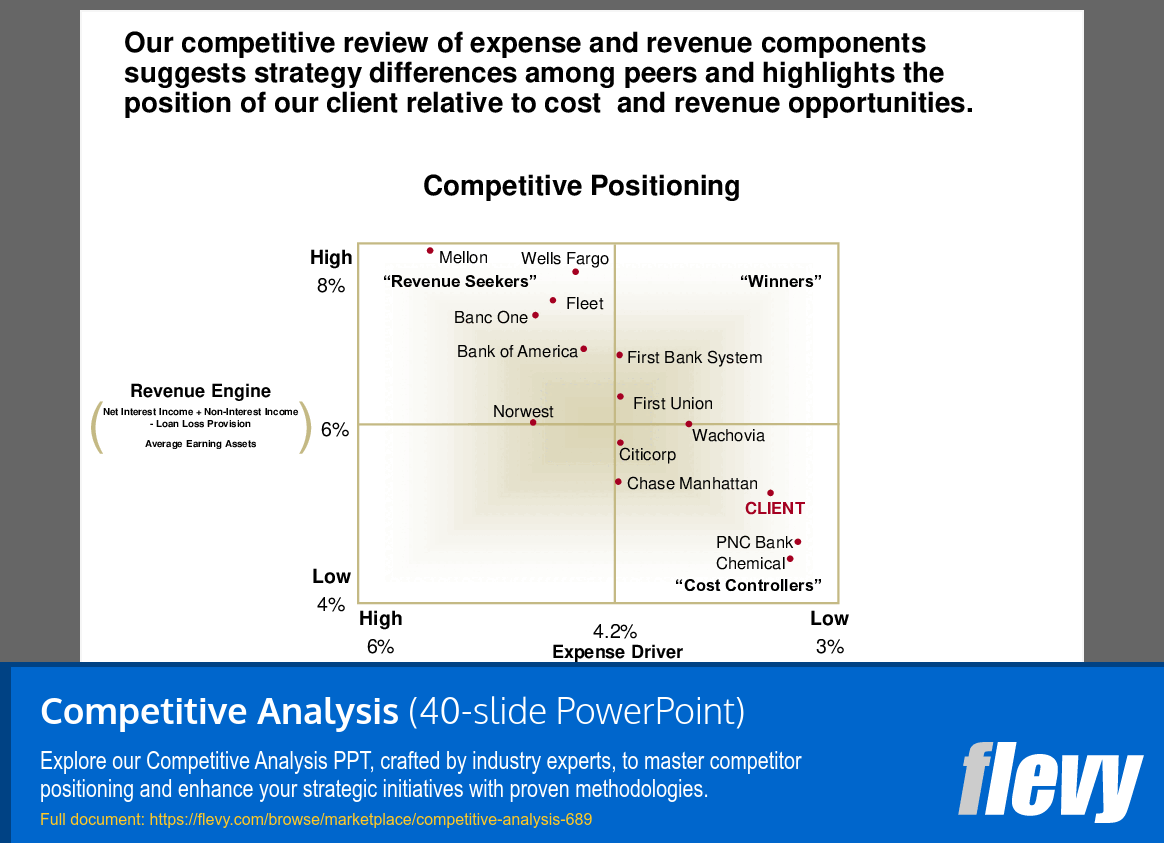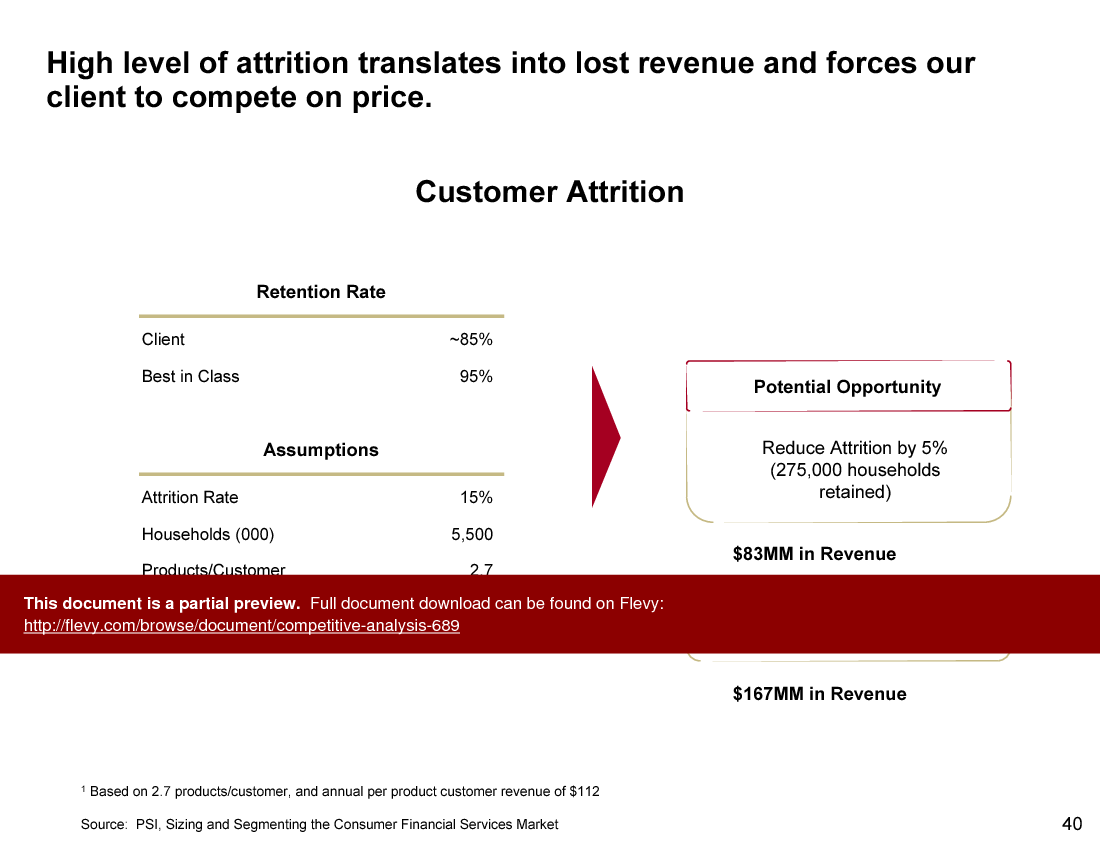Competitive Analysis (PowerPoint PPT Slide Deck)
PowerPoint (PPT) 40 Slides
COMPETITIVE ANALYSIS PPT DESCRIPTION
From a competitive strategy viewpoint, a competitor is someone who poses some threat to you or in whose business there is some opportunity for you.
Competitive analysis is...
Crucial to determining the attractiveness of a strategic initiative.
Aims to understand competitors and competitor positioning; this forms the basis for addressing top-level competitive issues.
Critical (though often ignored) element of Strategy Formulation and has become even more critical in Online/Digital Strategy.
This document delves into the intricacies of defining competitors, acknowledging that it's not always straightforward. It categorizes competitors into those vying for the same product, substitutes fulfilling the same value stream, and those with comparable production capabilities. Real-world examples like BA vs. Virgin Atlantic and Unilever vs. McDonald's illustrate these distinctions, emphasizing the complexity of competitive landscapes.
The XYZ Approach to Competitive Analysis offers a structured methodology for dissecting competitive environments. It includes comprehensive guidelines for researching private companies, leveraging both secondary and primary resources. This section is particularly valuable for industries with numerous privately held firms, where data is often scarce. The document outlines key resources like Hoover's Guide and D&B Reports, ensuring thorough and reliable research.
Porter's Five Forces Model is utilized to broaden the competitor set, identifying less obvious players. This model helps in understanding the threats of new entrants, the power of suppliers and buyers, and the intensity of competition. It also highlights the importance of substitutes, which can often be overlooked. This holistic view ensures a robust competitive analysis, providing insights into various market dynamics.
The document also includes a detailed competitor profile checklist, covering aspects from strategic intent to business systems. It emphasizes the need to gather basic and advanced profile information, such as sales growth, market share, and operational efficiencies. This comprehensive approach ensures that all critical facets of competitors are analyzed, providing a solid foundation for strategic decision-making.
Got a question about the product? Email us at support@flevy.com or ask the author directly by using the "Ask the Author a Question" form. If you cannot view the preview above this document description, go here to view the large preview instead.
Source: Best Practices in Competitive Analysis, Positioning PowerPoint Slides: Competitive Analysis PowerPoint (PPT) Presentation Slide Deck, Documents & Files
COMPETITIVE ANALYSIS PPT SLIDES
Strategic Positioning of Financial Institutions

This PPT slide presents a competitive positioning analysis that evaluates various financial institutions based on their expense and revenue strategies. It features a scatter plot with 2 axes: the vertical axis represents the "Revenue Engine," which encompasses net interest income, non-interest income, and loan loss provisions, while the horizontal axis indicates the "Expense Driver," reflecting the percentage of expenses relative to revenue.
The chart categorizes institutions into 4 distinct quadrants: "Revenue Seekers," "Winners," "Cost Controllers," and a lower quadrant that likely represents less effective strategies. The positioning of the client is highlighted prominently, indicating its relative standing among peers. The client is placed in the "Cost Controllers" quadrant, suggesting a focus on managing expenses effectively while potentially sacrificing revenue growth compared to those in the "Winners" category.
Notable competitors such as Mellon and Wells Fargo are positioned as "Revenue Seekers," indicating a strategy that prioritizes revenue generation. Institutions like First Bank System and First Union are categorized as "Winners," suggesting a balanced approach to both revenue and cost management. The analysis implies that while the client excels in cost control, there may be opportunities to enhance revenue generation strategies to improve overall performance.
This slide serves as a valuable tool for understanding the competitive dynamics in the financial sector. It highlights areas where the client can focus its strategic initiatives to either maintain its cost efficiency or explore avenues for revenue enhancement. The insights derived from this positioning can inform decision-making and strategic planning moving forward.
This document is available as part of the following discounted bundle(s):
Save 47%!
Essential Consulting Knowledge Builder
This bundle contains 21 total documents. See all the documents to the right.















